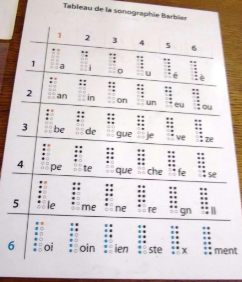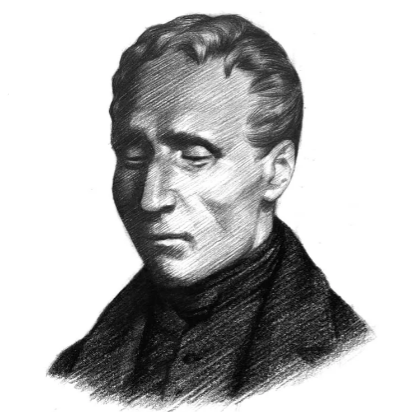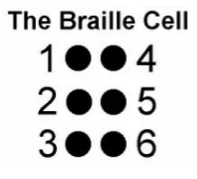The History of Braille

Many people know that braille is a system of touch reading and writing for blind people in which raised dots represent the letters of the alphabet, however, many people do not know the history behind it.
Charles Barbier
The history of braille goes all the way back to the early 1800s. A man named Charles Barbier who served in Napoleon Bonaparte’s French army developed a unique system known as “night writing” so soldiers could communicate safely during the night. As a military veteran, Barbier saw several soldiers killed because they used lamps after dark to read combat messages. As a result of the light shining from the lamps, enemy combatants knew where the French soldiers were and inevitably led to the loss of many men.

https://brailleworks.com/braille-resources/history-of-braille/
Barbier based his “night writing” system on a raised 12-dot cell; two dots wide and six dots tall. Each dot or combination of dots within the cell represented a letter or a phonetic sound. The problem with the military code was that the human fingertip could not feel all the dots with one touch.
Louis Braille
Louis Braille was born in the village of Coupvray, France on January 4, 1809. He lost his sight at a very young age after he accidentally stabbed himself in the eye with his father’s awl. Braille’s father was a leather-worker and poked holes in the leather goods he produced with the awl.

https://brailleworks.com/braille-resources/history-of-braille/
At eleven years old, Braille found inspiration to modify Charles Barbier’s “night writing” code in an effort to create an efficient written communication system for fellow blind individuals. One year earlier he was enrolled at the National Institute of the Blind in Paris. He spent the better part of the next nine years developing and refining the system of raised dots that has come to be known by his name, Braille.

https://brailleworks.com/braille-resources/history-of-braille/
After all of Braille’s work, the code was now based on cells with only 6-dots instead of 12 (like the example shown below). This crucial improvement meant that a fingertip could encompass the entire cell unit with one impression and move rapidly from one cell to the next. Over time, braille gradually came to be accepted throughout the world as the fundamental form of written communication for blind individuals. Today it remains basically as he invented it.
Citations
“The History of Braille [Your Braille Resource].” Braille Works, https://brailleworks.com/braille-resources/history-of-braille/.
Britannica, The Editors of Encyclopaedia. “Braille.” Encyclopædia Britannica, Encyclopædia Britannica, Inc., https://www.britannica.com/topic/Braille-writing-system.
Britannica, The Editors of Encyclopaedia. “Braille.” Encyclopædia Britannica, Encyclopædia Britannica, Inc., https://www.britannica.com/topic/Braille-writing-system
